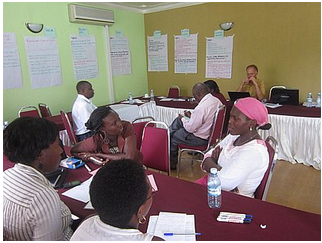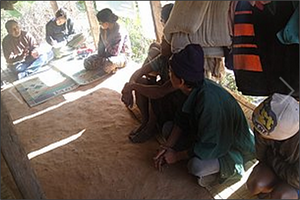Harmonisation & Coordination

increased water services
Harmonisation and coordination enables all actors – national and local government, donors, lending banks, NGOs and other water sector stakeholders – to recognise and adhere to common principles and approaches when supporting rural water services. For instance, the principle of aid effectiveness, which means external actors will better coordinate amongst themselves and align behind a recipient country's national policies, priorities, and systems. In other words, implementing programmes (at local level) should follow nationally-set guidelines and standards.
Why is it important for sustainable services at scale?
Establishing common rules of the game with standardized policies - on things like levels of service, technology, cost recovery, types of operator and monitoring frameworks - means that all stakeholders can work toward supporting the development of the sector. With improved coordination it is likely that newly built infrastructure will be better maintained and supported by permanent institutions, regardless of provenance of investment.
Challenges at decentralised levels
Although the basic premise is that support should be aligned with national policies and frameworks, a major risk is that such efforts do not automatically cascade down to local (or district and sub-district) levels.
It is not uncommon to find situations where aid programmes work in parallel to local government planning and once constructed, infrastructure projects are not embedded into permanent support mechanisms and services.
Sector wide approaches (SWAp)
A SWAp is a mechanism for improved alignment and coordination, which includes a common policy, development plan and set of programmatic approaches, and is led by government. Such an approach makes use of country systems and processes to ensure alignment and includes development agencies as partners. Experience indicates a number of success factors for a SWAp: vision, collaboration, ownership and good governance. Collaboration needs to happen from the outset with all stakeholders brought into the process.
Recommendations
There is no blueprint for improving harmonisation and coordination and there are alternatives to SWAps. However, experience points to a number of essential components which need to be in place. These are:
- An approved sector policy – this may be part of an overall strategic development framework or poverty reduction strategy
- A sector medium-term expenditure framework
- A performance monitoring system,
- A formalized government-led coordination process including donor coordination mechanism
- Harmonisation of reporting, budgeting, financial management and procurement systems
- Institutional capacity building, especially at local level
It is important to stress that increased harmonization should not work against innovation and learning, which should be addressed as a sector priority.
Field experiences
The following project(s) are utilizing Harmonisation & Coordination methods.
 Communication Knowledge Management Initiative |
 Knowledge Management and Learning, Uganda WA |
Selected references, tools and templates
- de la Harpe, J., 2011. Harmonisation and alignment literature review.The Hague: IRC International Water and Sanitation Centre.
- de la Harpe, J. 2012. Making aid effective at the local level, Briefing note no.5. IRC International Water and Sanitation Centre.
Acknowledgements
- Harmonisation & coordination. Water Services That Last. IRC.
